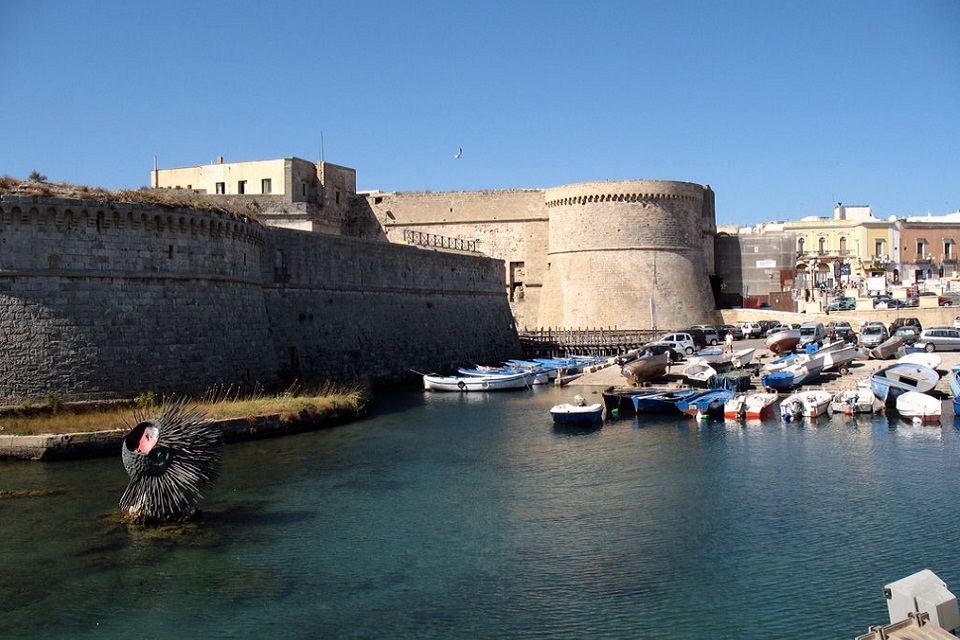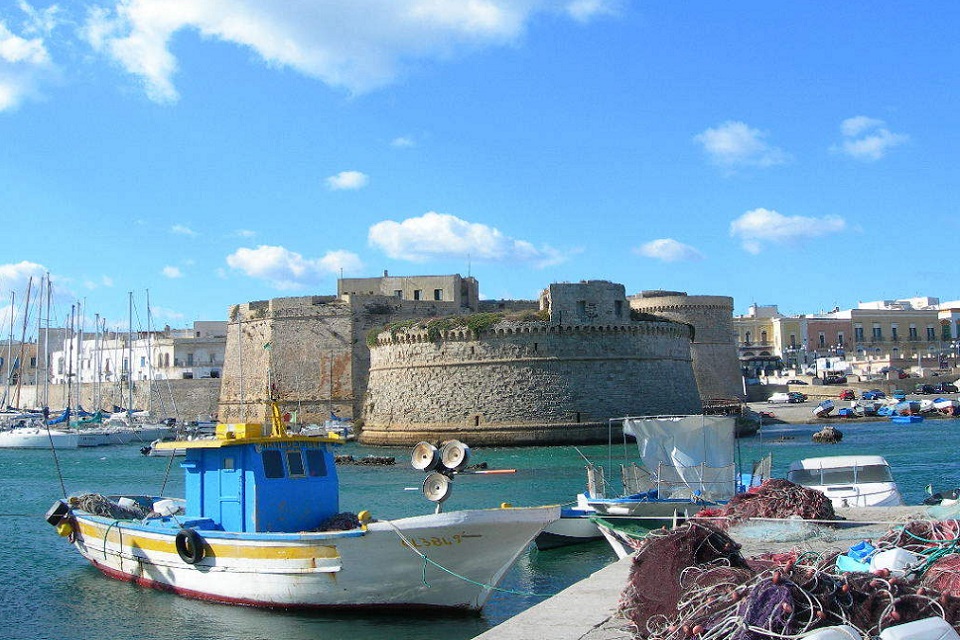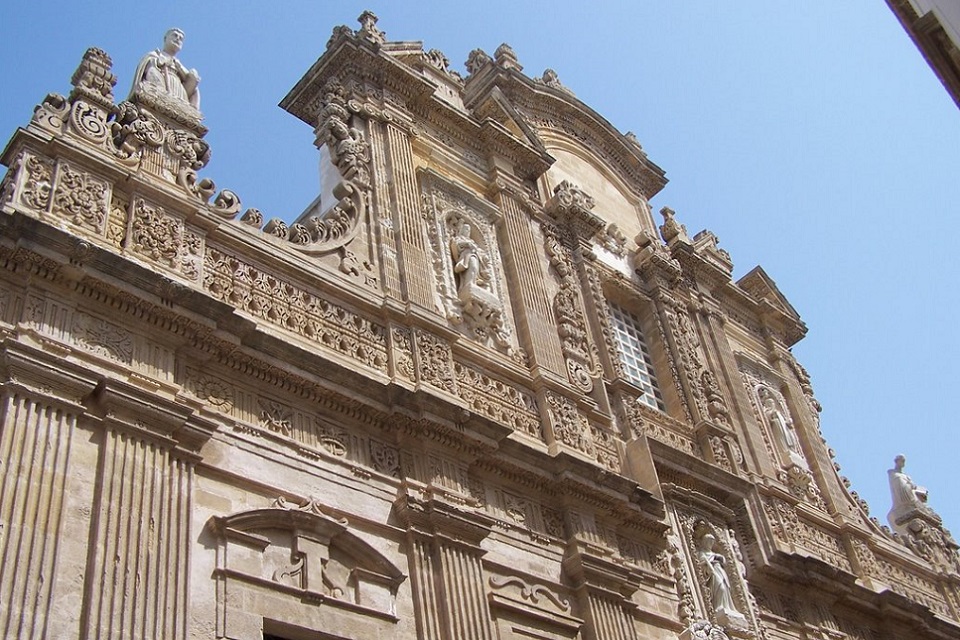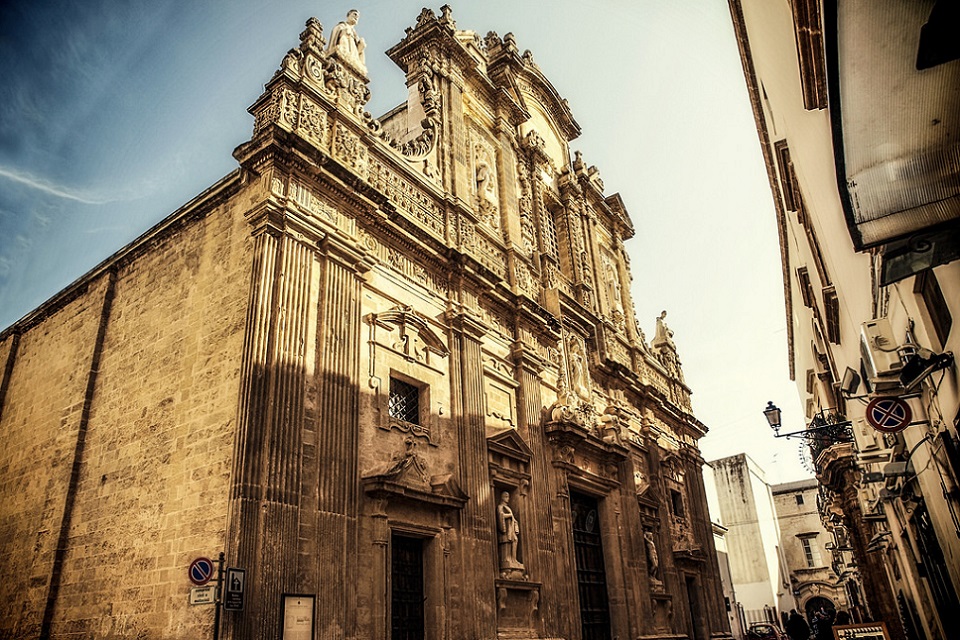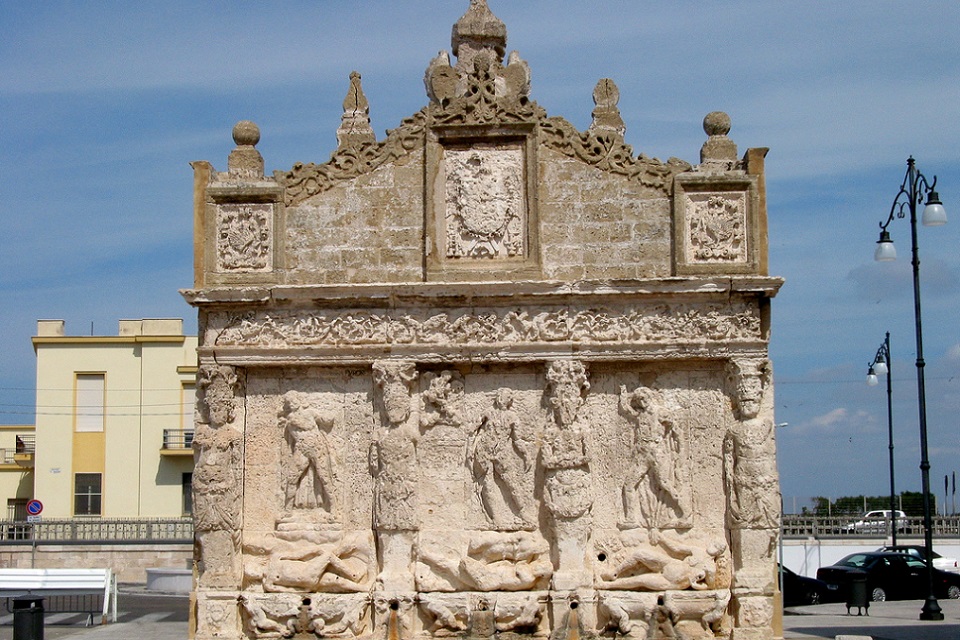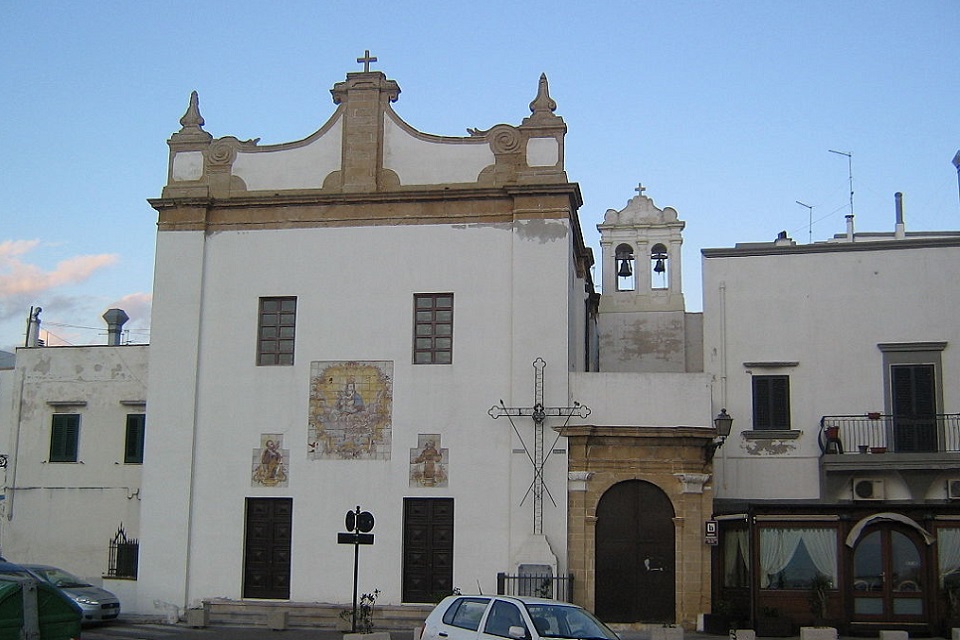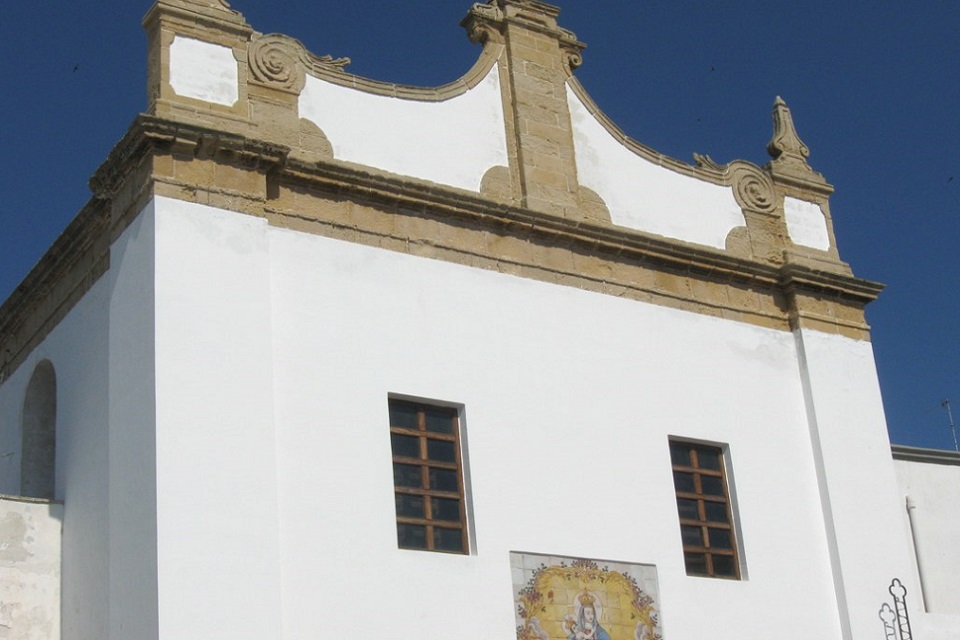Castello Angioino
Place by the Angevins in dominant position in defence of the port, Gallipoli Castle still retains the original square plan, with impressive circular angular bastions. In front of the Manor you can freshen up the Greek fountain that classical age still retains the three bas-reliefs representing, respectively, the metamorphosis of Dirce, Salamace and Biblide. The bas-reliefs are encased in a graceful Baroque frame.
Cathedral of Saint Agatha
The Cathedral of Saint Agatha is the most representative monument of the Baroque gallipolino and is located in a site probably intended for sacred area since antiquity. The façade is made of carparo, the tenacious local stone, and is characterized by a strong decorative richness. It presents a series of statues, one of which depicting St. Agatha. Also the interiors are extremely valuable, They seem to be one big painting as many paintings will adorn each corner. The peak can be reached by looking at the altar, made with exquisite polychrome marbles. The Cathedral has, Obviously, a great religious significance because there are cases with relics of several saints, including San Fausto.
Santa Maria della Purità
The Church of Santa Maria della Purità of Gallipoli was built in 1664 from the brotherhood of longshoremen Apulian town. It is a single nave; the plaster facade has three Centre tiled panels depicting the Madonna della Purità, St. Joseph and St. Francis of Assisi, dating back to the 19th century. The Interior is decorated with paintings and majolica floor. The high altar is the painting with Madonna between St. Joseph and St. Francis of Assisi by Luca Giordano of 1664.
The Greek Fountain
The Greek Fountain of Gallipoli has this name because once believed Graeco-Roman age. This had brought with it the idea that the fountain was among the oldest in Italy. Recent studies have shown that the fountain belongs to the Renaissance period (Although it is still debated). It is adorned with bas-reliefs with the metamorphosis of Mythology Dirce, Salmacis and Biblide.
